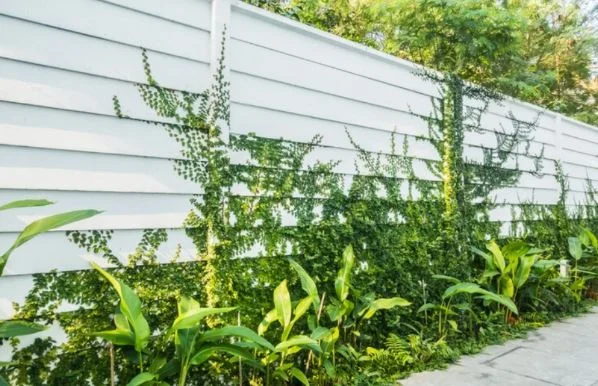When it comes to protecting our cherished gardens, understanding the guide to fence sizes for garden protection is essential. We’ve all experienced the frustration of discovering that our plants have been nibbled away or that our vegetables have been raided by unexpected visitors. Whether it’s rabbits munching on our lettuce or deer leaping over our fences, the challenges are numerous. Our mission at Critterfence is to help you create a haven for your plants and pets by providing the right fencing solutions tailored to the critters in your area.
Understanding the Importance of Fence Sizes
The size of the openings in your fence plays a crucial role in determining what animals can enter your garden. A well-designed fence not only deters unwanted critters but also ensures that your garden remains a thriving ecosystem. When we think about fencing, it’s essential to consider the various animals that may attempt to invade our space. The guide to fence sizes for garden protection provides a comprehensive overview of the recommended opening sizes for different animals, allowing us to make informed decisions.
For instance, rabbits, known for their agility and ability to squeeze through tight spaces, can fit through openings larger than 1 inch. To keep them out, we recommend using a fence with openings of 1 inch or smaller. On the other hand, snakes, which can be a concern in many regions, require a fence with openings no larger than ¼ inch to prevent their entry. Understanding these specifications helps us choose the right type of fence for our gardens.
Tailoring Fencing to Specific Animals
When selecting a fence, it’s not just about the size of the openings; it’s also about the type of animals we need to protect against. Each critter has its unique characteristics, and our fencing should reflect that. For example, if we’re dealing with groundhogs, we know these clever diggers can burrow under fences. A fence for groundhogs should have a 2-inch opening size or smaller, with at least 6 inches of mesh buried underground to prevent them from digging their way in.
Deer and elk present another challenge. These animals are excellent jumpers, so a fence that stands 7.5 to 8 feet tall is often recommended. While a 4-inch opening size may work, opting for a smaller size enhances the chances of keeping them from getting caught in the fence. A well-constructed fence that takes their behaviour into account not only protects our gardens but also ensures the safety of the animals themselves.
Choosing the Right Materials
Material selection is just as important as the size of the openings. At Critterfence, we offer a variety of materials, from poly mesh to steel wire, each serving different purposes based on the animals we are trying to exclude. For instance, if we want to keep out birds and smaller critters like chipmunks, a ½ inch opening size is ideal. This allows us to prevent these agile creatures from accessing our gardens without compromising the aesthetics of our landscape.
For larger animals like feral pigs or coyotes, a sturdier solution is required. We recommend a strong steel mesh, ideally with a 2×4-inch opening size, to withstand the strength of these animals. These materials not only deter intrusions but also ensure the longevity of the fence, saving us the hassle of frequent replacements.
The Role of Enclosures
While fences are effective, sometimes they are not enough. For smaller animals like squirrels and chipmunks, a complete enclosure may be necessary. We suggest using a 1-inch or smaller grid fence that encloses the area completely, including a top. This type of setup is essential for keeping these persistent critters at bay. By constructing an enclosure, we also create a safe play area for pets, ensuring they can enjoy the outdoors without the risk of escaping or encountering wildlife.
Cats, too, require special considerations. If we want to keep our feline friends safe while allowing them to enjoy the outdoors, a no-climb extension is a fantastic option. This extension can be added to existing fences, ensuring that they remain inside while protecting them from potential predators. Utilising our guide to fence sizes for garden protection, we can create a tailored solution that meets the needs of our gardens and the animals we care about.
Maintaining Your Garden Fence
Once we’ve established our fence, maintenance becomes key to ensuring its effectiveness. Regular checks for damage or wear are essential. Animals are crafty and will test the integrity of the fence. We should inspect the openings to ensure they haven’t expanded over time and check for any signs of digging or climbing attempts. Addressing these issues promptly will save us from larger problems down the road.
Additionally, keeping the area around the fence clear of debris and vegetation helps deter animals from attempting to breach it. A clean perimeter reduces the temptation for critters to explore our gardens, providing an extra layer of protection.
Understanding and implementing the right fencing solutions is pivotal to protecting our gardens. By utilizing the guide to fence sizes for garden protection, we create a secure environment for our plants and pets, allowing us to enjoy the beauty of nature without the worry of unwanted visitors. At Critterfence, we are committed to helping you find the best fencing solutions tailored to your specific needs, ensuring your garden remains a sanctuary for the flora and fauna we love.










 /home/u448362301/domains/theexpotab.com/public_html/wp-content/themes/foxiz/templates/popup.php on line 167
/home/u448362301/domains/theexpotab.com/public_html/wp-content/themes/foxiz/templates/popup.php on line 167